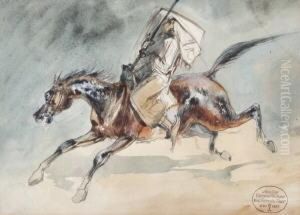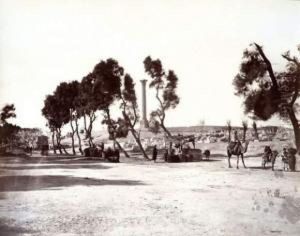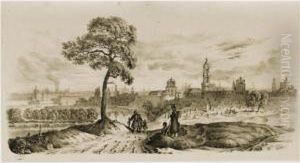Christian Wilhelm Von Faber Du Faur Paintings
Christian Wilhelm Ernst Dietrich von Faber du Faur, known more succinctly as Wilhelm von Faber du Faur, was a German artist and soldier born on May 20, 1780, in Stuttgart, Germany. He is most prominently recognized for his work as a military painter, particularly for his detailed and vivid representations of the Napoleonic Wars, in which he himself participated as an officer in the Württemberg army.
Faber du Faur was not only a soldier but also a talented artist who managed to combine his military career with his passion for art. He entered the military service of the Duchy of Württemberg and later served in the army of the Kingdom of Württemberg, which had a close alliance with Napoleon's France. His experiences on the battlefield profoundly influenced his art, as he often drew and painted scenes based on the campaigns he was involved in, offering a unique and authentic perspective of military life during this tumultuous period in European history.
Throughout his life, Faber du Faur produced a series of sketches and paintings that provide a visual documentation of the events and scenes he witnessed. His works are particularly valued for their historical accuracy and the way they convey the grim realities of war. He took great care in depicting the uniforms, landscapes, and the atmosphere of the battles and encampments, which has made his art a valuable resource for historians studying the Napoleonic era.
Wilhelm von Faber du Faur’s legacy as an artist is also connected to his publication 'Mit Napoleon in Russland' (With Napoleon in Russia), which includes a collection of his sketches accompanied by commentary. This work is considered one of the most significant eyewitness accounts of Napoleon's disastrous Russian campaign of 1812. It provides not only a visual record but also personal insights into the experiences of soldiers during this campaign.
He died on November 16, 1857, in Nuremberg, leaving behind a body of work that continues to be of great interest to both art enthusiasts and historians alike. While Faber du Faur may not be as widely recognized as some of his contemporaries, his contributions to military art and the documentation of the Napoleonic Wars remain significant.


